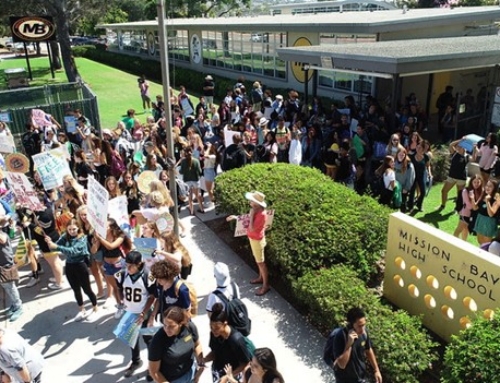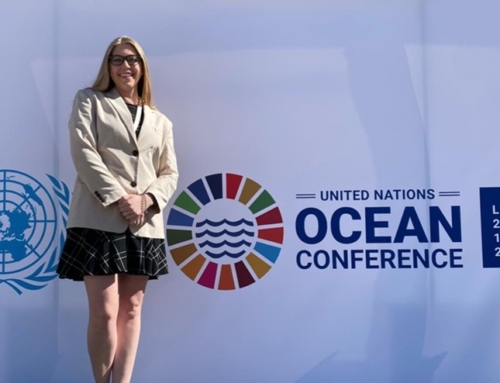Thank you to the 20 attendees who joined us for our December 2014 STAY COOL member meeting in Del Mar. At this meeting we first heard from Nancy Bragado on the City of San Diego’s Climate Action Plan (CAP).
For background, the City of San Diego’s current CAP has been in development since 2011, managed by four different city mayors. Mayor Faulconer released the current draft in September 2014. It is currently out for environmental review and will come before the entire city council for final approval in summer or fall 2015. The city’s team has done a fine job with a comprehensive public outreach plan that included: more than 30 public presentations since 2011, an Environmental & Economic Sustainability Task Force independent advisory body formed solely for the CAP, and extensive outreach to business and environmental organizations.
The main objective of the plan (in addition to meeting state-mandated emissions reductions goals), is to reduce greenhouse gas emissions (GHG) while strengthening the economy and improving San Diego’s quality of life. The CAP supports the city’s 2008 general plan.
In 2010 new baseline emissions inventory was conducted. Transportation is the largest source of GHG, with electricity and natural gas combined nearly making up the other half (see pie chart at right).
source of GHG, with electricity and natural gas combined nearly making up the other half (see pie chart at right).
The five strategies for reducing emissions outlined in the San Diego Climate Action Plan are:
- Energy and water efficient buildings
- Increase energy efficiency and reduce water usage
- Create a mix of regulatory mandates and incentives to improve building performance
- Increase renewable energy at municipal facilities
- Clean & Renewable Energy
- Facilitate installation of renewable energy locally
- Create jobs in renewable energy sector
- Bicycling, walking, transit and land use
- Implement smart growth and promote alternative modes of travel
- Reduce vehicle miles traveled, improve mobility and reduce fuel consumption
- Zero waste
- Achieve a 75% waste diversion rate to landfills by 2020
- Reach 90% diversion rate by 2035
- Climate Resiliency (adaptation)
- Increase the City’s urban tree canopy coverage
- Calls for a stand-alone Adaptation Plan (the city will work on this at a future date)
Next steps include continued Environmental Committee work, preparing the final environmental document, and reviewing and incorporating public comments. There is still time to submit your input: cap@sandiego.gov. Later next year, the team will finalize the plan and prepare the CEQA documentation for City Council consideration.
In the end, San Diegans will have to choose to use transit and alternative forms of transportation in order for emissions reductions goals to be achieved. That likely won’t happen without broad support and participation. This is where STAY COOL can help – by showing public support for these ambitious goals.
Gail Welch, Senior Manager of Sustainability from Qualcomm shared how a company can go green while yielding financial benefits. She shared a video and presentation on Qualcomm’s sustainability practices. Qualcomm has been successful at  increasing energy efficiency and reducing the company’s carbon footprint while cutting costs. Specifically, the company has implemented more than 500 projects to reduce CO2 emissions throughout their 11,000,000 square feet of facilities. Qualcomm believes sustainability is a core business value, but efforts must also help the bottom line. Three electrical co-generation facilities produce about 90 percent of their electricity requirements, saving the company $4 million in energy expenses each year.
increasing energy efficiency and reducing the company’s carbon footprint while cutting costs. Specifically, the company has implemented more than 500 projects to reduce CO2 emissions throughout their 11,000,000 square feet of facilities. Qualcomm believes sustainability is a core business value, but efforts must also help the bottom line. Three electrical co-generation facilities produce about 90 percent of their electricity requirements, saving the company $4 million in energy expenses each year.
If you would like to view the ten minute corporate video Gail presented on December 9, please email Program Manager Sarah Benson with your request to receive a digital copy.
Sarah shared recent member activities, including a list of 2014 accomplishments. Click here to download what we have achieved in the past year: 2014 Accomplishments (a future blog post will review these accomplishments). We look forward to another year of membership growth, educational events and additional ways for our members to become “grandparent advocates.” Stay tuned!



